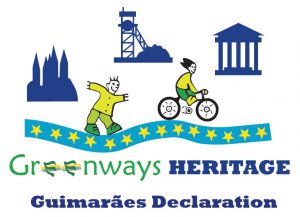
GREENWAYS HERITAGE declaration for the promotion of UNESCO sites and greenways as common destinations in Europe.
Greenways are a very appealing destination for active tourism and play a vital role in local economic development of the territories through which they run. There have been some highly successful examples of tourism at a European level which have had a major economic impact, and these are encouraging others to develop new projects. Greenways are an essential source of revenue for local and regional economies; they are growing and expanding over the whole of Europe, and they have a strong growth potential.
There is no inventory nor comprehensive and systematic statistics on disused railway lines in Europe and their conversion into greenways. However, closures of various types of railway lines are common throughout Europe.
We estimate that there are around 19,000 [1] kilometres of railway-based greenways in Europe, which would represent just 15% to 20% of all disused railway lines. The future conversion of undeveloped disused railway lines into greenways represents a major growth potential; not to mention greenways based on canal towpaths, which exploit Europe’s considerable hydraulic engineering heritage.
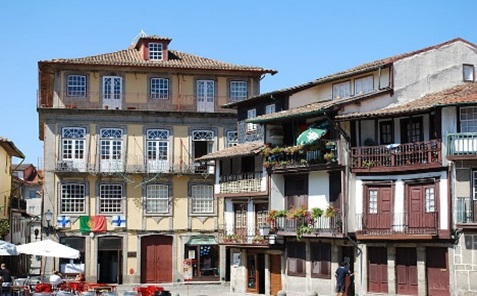 UNESCO World Heritage sites in Europe. The 354 World Heritage sites in Europe account for close to half of the total number sites inscribed on UNESCO’s World Heritage list and are considered as a key asset for EU tourism [2].
UNESCO World Heritage sites in Europe. The 354 World Heritage sites in Europe account for close to half of the total number sites inscribed on UNESCO’s World Heritage list and are considered as a key asset for EU tourism [2].
Many greenways have UNESCO cultural heritage sites nearby, although up until now there has been no joint promotional effort for these two important cultural resources to benefit from. The link between greenways and UNESCO sites continues to be tenuous.
Greenways on their own have an outstanding cultural value, being mainly based on the reuse of disused railway lines and canal towpaths, some of which are historic. They have notable examples of service buildings, such as disused stations converted for new roles, and singular engineering works of great value, such as tunnels, viaducts, canal locks, etc.
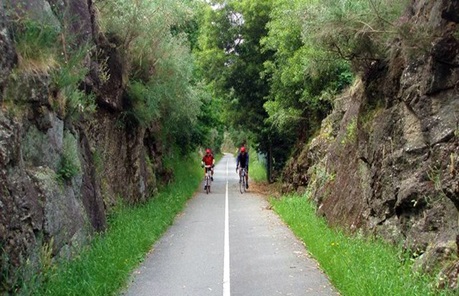
Greenways enable people to access UNESCO heritage sites using non-motorized means of transport, mostly cycling or walking.
There is a clear positive trend in “active” tourism; hiking and cycle tourism are among the open air activities with the strongest demand and growth at an international level.
Cultural and industrial tourism is one of the biggest tourism markets in the world and it is also one of the fastest growing markets. Increasingly greater use is made of cultural and creative industries to promote destinations and enhance their competitiveness and appeal.
The wealth and appeal of UNESCO sites and greenways as separate destinations could be multiplied if those destinations were to be combined. The two resources reflect the history of Europe, a shared identity, and the opportunity to reach a broader segment of tourists.
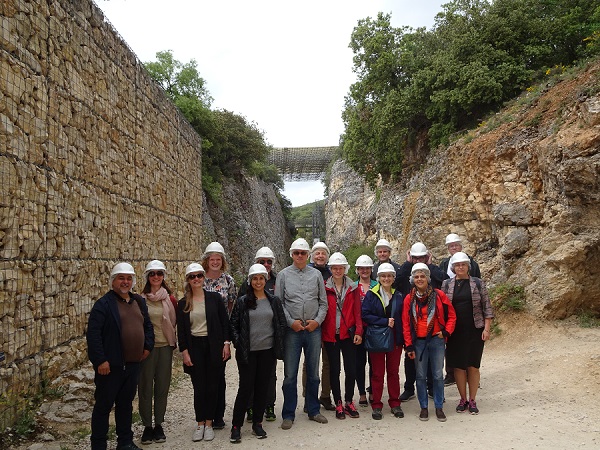
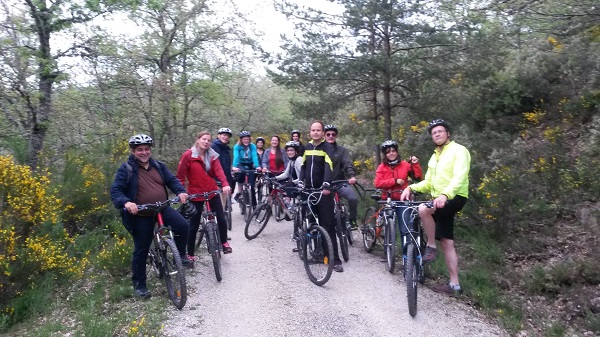
There is, therefore, a strong growth potential: greenway tourists who visit UNESCO sites and UNESCO visitors who might walk or cycle on the greenways and encourage the development of sustainable tourism in the territories they run through. These two resources are a huge benefit for both tourists and the local population.
An important number of European cities (f.e. Amsterdam, Bruges, Brussels, Ghent, Barcelona, Venice …) are overwhelmed by crowds of tourists. To encourage the spread of tourism, the Greenways Heritage project can contribute to this issue. Greenways often connect UNESCO-heritage sites in the countryside. These are not overrun by tourists, so a part of the overload in the cities can be moved to the countryside. This behavioral change in travel can also contribute to the growth of the local economy and stimulates sustainable tourism.
The purpose of this Declaration is to promote UNESCO heritage and other cultural assets in the proximity of greenways as an essential part of those greenways, and to promote the association of these two valuable resources as common destinations.
To this end the European Greenways Association and the signatories of this declaration undertake, to the extent of their competency and scope of practice, to:
1. Enhance visibility and jointly promote greenways and UNESCO sites as common tourist destinations, including UNESCO assets in the information on the relevant greenways and referring to greenways in the vicinity of UNESCO heritage sites.
2. Implement / encourage the physical connection between the two resources, in order to facilitate tourists’ arrival at UNESCO sites via greenways using a non-motorized means of transport, and the adoption of measures enabling greenway users to enjoy trouble-free visits to UNESCO, particularly with regard to the safe storage of the bikes and luggage of the tourists.
3. Generate new tourism products which combine these two valuable resources (UNESCO sites and greenways in Europe) and to design attractive tours which showcase the cultural heritage in the territory, tours which will be available to tourists and tour operators alike.
4. Improve the information for tourists in order to encourage them to choose UNESCO + European greenways as their common destination. This information should allow tourists to find out about and appreciate the attractions to be found in the vicinity of greenways and UNESCO sites, using the most appropriate media in each case. To encourage online information and the use of the new information technologies (GIS of the routes, with information on cultural resources and tourism products), and to promote cultural and creative industries (CCI) providing attractive and useful information about the routes (3D images and virtual visits, videos made with drones, etc.).
5. Encourage a structured tourism product and involve local SMEs in the tourism offer, improving their skills to make them more competitive:
a. ⇒ Improve their ability to meet the demands of the customers and create tourism products.
b. ⇒ Promote the use of the new information technologies enabling them to position themselves better and gain visibility in a global market.
c. ⇒ Create favourable conditions which will facilitate collaboration between SMEs and networking at a local, national and/or international level to attract more tourists and improve SMEs’ business results.
6. Promote and improve effective public-private, public-public, and private-private cooperation among all the stakeholders involved, in order to take greater advantage of the important opportunities provided by greenways tied to UNESCO heritage sites.
7. Raise the awareness of stakeholders in the promotion and marketing of the greenways linked to UNESCO sites, leveraging the most appropriate innovative tools and technologies to inform and enrich the experience of visitors to greenways and UNESCO sites. To encourage the organization of workshops and meetings to publicize the most appropriate tools available and their implementation tailored to the various realities of the territory.
8. Work to attract more visitors to the UNESCO cultural sites among greenway fans, and to attract new greenway users from among UNESCO site tourists, showcasing the cultural heritage and raising awareness regarding the need to respect and look after these valuable resources, and regarding the local population and traditional activities.
9. Promote innovative actions which can be replicated by other greenways linked to UNESCO heritage sites. The idea is to encourage tourists to visit greenways and UNESCO sites using non-motorized means of transport, such as cycling or walking, and to re-interpret the valuable cultural heritage along the routes, thanks to the use of technologies related to creative and cultural industries at UNESCO sites and cultural or natural heritage in the vicinity of the greenways (augmented reality, 3D images) and at the actual infrastructures and buildings of the greenways.
10. Encourage monitoring of visitors in order to be able to measure the impact of UNESCO+Greenways tourism and implement strategies that promote the development of sustainable tourism in the territory. To get to know the visitors interests so as to be able to meet all their expectations.
Adherence to this declaration is open to:
- Local, regional, national and European authorities.
- Greenway management authorities and railway, canal, and forest road management authorities.
- UNESCO authorities
- The private sector, in particular SMEs located in the vicinity of greenways and UNESCO heritage sites, or those which operate in these territories.
This declaration has been presented at the conference “Greenways HERITAGE: UNESCO sites and greenways, a common destination” at Guimarães.
It has been signed by those participating in the conference, and other entities linked to the project Greenways Heritage have also adhered; we are continuing with the dissemination process and are seeking the support of parties interested in backing this Declaration.
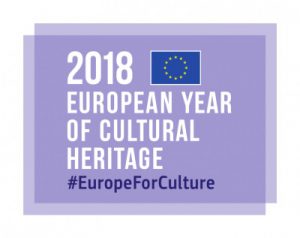
In European Cultural Heritage Year, at Guimarães (Portugal) on November 29, 2018
The GREENWAYS HERITAGE project forms part of the European Union’s COSME programme. Information about the project is available at www.greenwaysheritage.org
[1] EGWA estimation.
[2] UNESCO – http://www.unesco.org/new/en/brussels/about-this-office/single-view/news/supporting_sustainable_tourism_in_europe_the_eu_china_touri-1/





 Disclaimer: The content of this web represents the views of the author only and is his/her sole responsibility; it cannot be considered to reflect the views of the Executive Agency for Small and Medium-sized Enterprises or any other body of the European Union. The European Commission and the Agency do not accept any responsibility for use that may be made of the information it contains.
Disclaimer: The content of this web represents the views of the author only and is his/her sole responsibility; it cannot be considered to reflect the views of the Executive Agency for Small and Medium-sized Enterprises or any other body of the European Union. The European Commission and the Agency do not accept any responsibility for use that may be made of the information it contains.